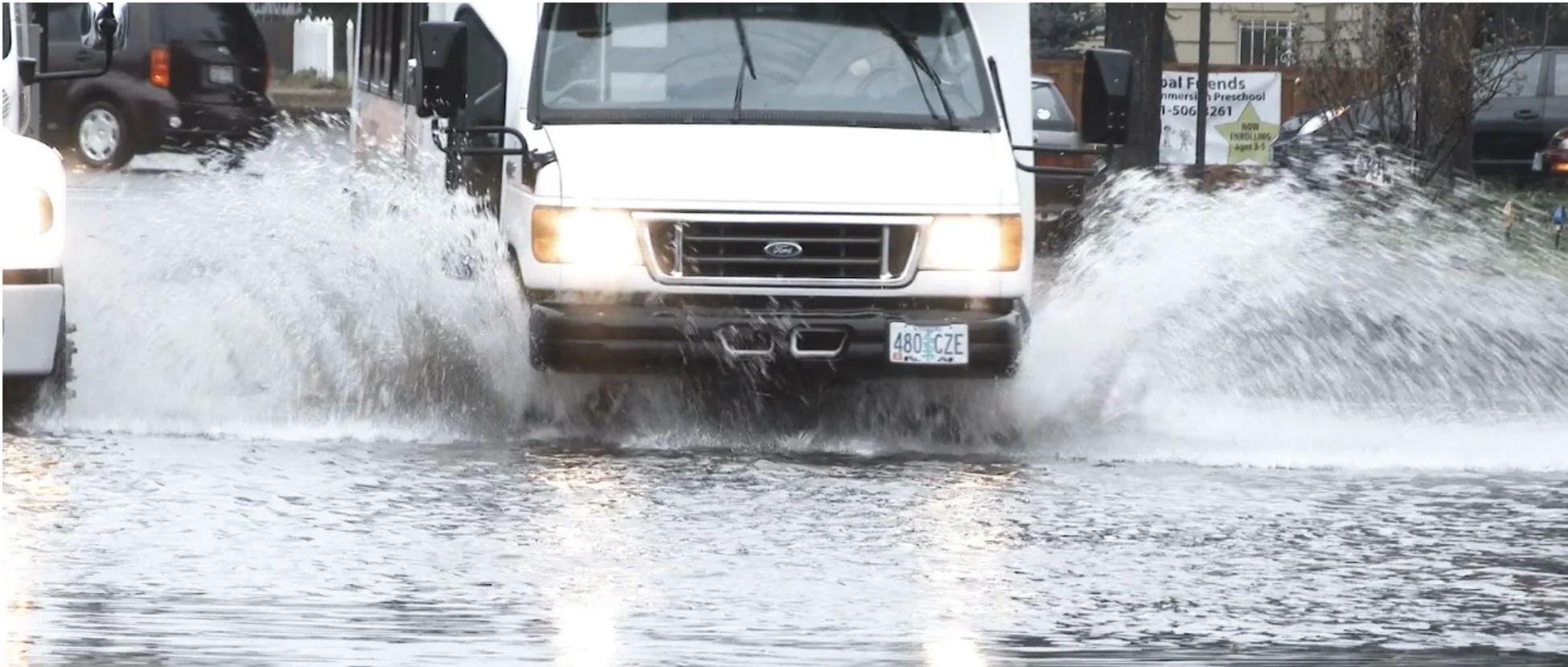
Why some roadways are designed to flood during storms
While it might seem like something’s wrong when there's pooling of water on a roadway, it often comes by design. The Weather Network's Connor O'Donovan reports.
Did you know some roadways are actually engineered to flood temporarily during intense rainfall events?
While it might seem counterintuitive, forced water pooling plays an important part in stormwater management, according to City of Calgary Environmental Management Manager Frank Frigo.
"What we are trying to avoid is a situation where the sewer pipe capacity is exceeded and there’s backup either into homes and businesses or flooding more topographically low or downstream areas," Frigo says.
"Pooling is generally encouraged by the engineering in places where the sewer capacity would become overwhelmed."
RELATED: Calgary is preparing for an even bigger flood than 2013
To avoid sewer line backup and uncontrolled flooding along the stormwater drainage system, drainage engineers employ "trap lows", or temporary stormwater storage sites typically found at the low points of roadways.
The stormwater is kept in the trap lows, and out of sewer lines by inlet control devices placed inside stormwater catch basins.
These small metal plates are engineered to allow just the right amount of water to flow through, so sewer lines aren’t overwhelmed and pooling doesn’t climb too high. In extreme rain events, Frigo says, drivers may see water rising nearly half a metre above street level. The pooling will generally drain away within a few hours.

(Source: City of Calgary)
"Because catch basins can plug with debris or hail, it’s important that if the water isn’t receding within the span of a couple of hours, we certainly want to hear about that from Calgarians," says Frigo.
The usage of trap lows and inlet control devices is part of what engineers call the "dual drainage concept", Frigo explains, which involves using not just sewer pipes, but also overland grading to manage and control stormwater runoff.
The City of Calgary and others like it have been implementing the dual drainage concept into urban design since the late 1980s.
Of course, many of Calgary’s communities were built decades before then. In fact, some of the stormwater management systems in these neighbourhoods date back nearly a century.

Storm drains across Calgary (Source: The City of Calgary)
SEE ALSO: Alberta smashes annual wildland burned record by mid-June
In addition to retrofitting sewer lines and catch basins in these communities, engineers use solutions like dry and wet ponds, constructed wetlands, outflows, and green development practices to slow down stormwater runoff.
As the city looks towards a future where rain events are likely to become more frequent and intense thanks to human-caused climate change, it is redeveloping its stormwater management strategy in anticipation of greater risk.
"We recognize that in Calgary we do have a changing climate. That does mean we’re expecting more severe storms during the summertime, and we’re expecting increased hail," says Frigo of the implications of a warmer atmosphere.
Largely, it’s that incremental heat that’s part of the driver of why we’re expecting to see increased change in terms of the climate that Calgary’s subjected to."











